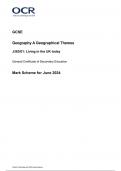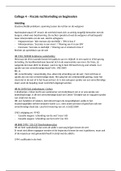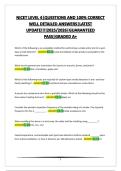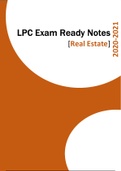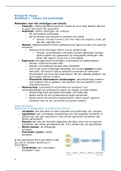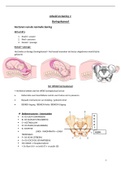By Pepijn Paans
Student 2016 – 2017
MSc Transport & Supply Chain Management
FACEBOOK: https://www.facebook.com/pepijn.paans
LINKEDIN: https://www.linkedin.com/in/pepijn-paans-6b828a80
EMAIL:
,Books:
• Longley et al. (2005): Geographical information systems and science
• deSmith et al. (2005): Geospatial analysis, a comprehensive guide to principles,
techniques and software tools.
By: Pepijn Paans, Graduate student Business Administration: Transport and supply chain
management.
deSmith (2005) chapter 3
spatial analysis as a process
well-defined stages:
- problem formulation
- planning
- data gathering: raises many questions
- exploratory analysis: simple mapping, or more complex and dynamic exploration
- hypothesis formulation: series of possible outcomes
- modelling and testing
- consultation and review
- final reporting and/or implementation of the findings
spatial analysis can be seen as a part of a decision support infrastructure.
Analytical methodologies
The simple process described above is an oversimplification in reality. The process is rarely a
natural from start to finish, and usually involves going back to previous steps and re-
evaluation of the validity of decisions made and the process is iterative.
In a supplier-client relationship it is often useful to start with the customer requirements and
expectations, and to determine what needs to be done in order to meet these requirements
within the timescale and resources available.
Confounding is identifying a result which is thought to be explained by a factor that has been
identified, but is in reality related to one or more other factors that did not form part of the
analysis.
Below is a visualisation of the PPDAC (problem, plan, data, analysis, conclusion) statistical
method from Mackay and Oldford.
,This method is too narrow for many complex real-world situations and focuses on scientific
research more than on a broader range of practical problems that the GIS analyst is likely to
encounter.
PPDAC is a flexible and dynamic methodology, not a rigid set of procedures or forms.
1. Problem; framing the question
Active involvement of third parties in problem specification and sometimes throughout the
entire process is essential. This, because third parties judge the success of the programme of
analysis.
Breaking down problems into key components is often very effective.
Also interactions and dependencies between key components should be examined.
Ecological fallacy is a danger of ascribing characteristics to members of a group when only
the overall group characteristics are known.
Atomistic fallacy is the ascribing of characteristics to members of a group based on a
potentially unrepresentative sample of members.
After a question is framed, it might be altered in the light of preliminary investigations,
technical or commercial considerations or unforeseen events.
2. Plan; formulating the approach
The next step is to formulate an approach that has the best possible chance of addressing
the problem and achieving the answers (outcomes) that meet expectations.
,One would have to consider each of the subsequent stages before firming up on the detail of
the plan.
The output of the plan stage is often formulated as a detailed project plan.
When deciding upon the design approach and analytical methods/tools it is essential to
identify available datasets, examine their quality, strengths, weaknesses, and carry out
exploratory work on subsets or samples in order to clarify the kind of approach that will be
both practical and effective.
Some analytical techniques are described as being more robust than others. By this is meant
that they are less susceptible to data extremes or unusual datasets.
3. Data: data acquisition
Datasets in spatial analysis are often provided by third parties and should therefore be
carefully examined on their quality and provenance (herkomst). And often the analyst has to
choose between different datasets to use.
No dataset is perfect
4. Analysis: analytical methods and tools
Simplicity and parsimony (spaarzaamheid) – using the simplest and clearest tools, models
and forms of visualization – and fit to the problem and objectives should be the key criteria
that should be applied.
Spatial analysis can be characterized by static analysis – searching for readily visible or
hidden patterns or anomalies, leading to new ideas and hypotheses – and spatial modelling,
which is regarded as implementing ideas and hypotheses.
Frequently the objective of analysis is described as being the identification and description
of spatial patterns, leading to attempts to understand and model the processes that have
given rise to the observed patterns.
5. Conclusions: delivering the results
The last stage of the PPDAC process is that of reaching conclusions based upon the analyses
conducted, and communicating these to others. Implementation of findings is not part of
this model process.
Geospatial analysis and model building
Building geospatial models follows the procedure of build-fit-criticize cycle.
• This envisages the designer building a model on paper or computer
• Evaluating the behaviour of the model under various conditions and datasets
, • Examining the performance of the model in terms of outputs, performance speed,
completeness, robustness, efficiency, quality and fitness for purpose.
For ArcGis and some other GIS packages, model refers specifically to the use of graphical
tools to design and execute a series of geoprocessing tasks.
A model takes the simplified form of: INPUT à PROCESS à OUTPUT
However, in many real-world workflow situations a whole series of input à process à
output steps are involved.
We call the above process as static deterministic model. It always results in a specific output
which will always be generated in the same manner from a given input.
A high-level model can be developed, which permit iterative behaviour. This creates a model
with a more dynamic structure. The output of one dataset is the input for the next iteration.
Another common development for high-level models is to build-in stochastic (randomly
generated) behaviour for some components, this enables a range of outcomes to be
generated from a single starting set of data.
Models that generate relatively narrow solution envelopes, that have been validated with
current or past datasets, may provide greater confidence in forecast values than models that
have a wide spread of possible outcomes. However, this model might be limited.
Models that generate consistently good predictions over time with a wide range of input
data, can reasonably be regarded as more robust and less uncertain, and hence are better
than models that have limited predictive success or which have had limited testing with real-
world data.
Models that provide predictions should include estimates of the uncertainty associated with
these predictions.
One can implement geospatial models in a different software environment that is
application specific and accept standard GIS files as input and generate GIS data files as
optional output. This is referred to as loose coupling.
Geodata = data about data
When validating data that is used in representations of social measurements, it is helpful to
distinguish between direct and indirect indicators of human populations.
Direct indicators are data that have a clear and identifiable correspondence with a focus of
interest. E.g. net income and accumulated assets as an indicator of affluence.


